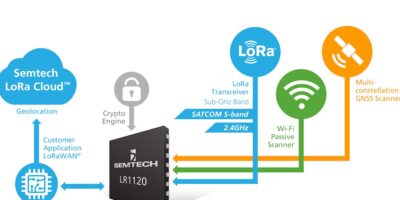Believed to be the first clock buffers and multiplexers on the market to meet stringent PCIe Gen6 specifications, the RC190xx clock buffers and RC192xx multiplexers have been released by Renesas.
The release comprises 11 clock buffers and four multiplexers. The devices, which also support and provide extra margin for PCIe Gen5 implementations, complement Renesas’ low-jitter 9SQ440, 9FGV1002 and 9FGV1006 clock generators for PCIe Gen6 timing for data centre / cloud computing, networking and high-speed industrial applications.
The PCIe Gen6 standard supports extremely high data rates of 64Gtransfers per second while requiring very low clock jitter performance of less than 100fs RMS. The RC190xx clock buffers and RC192xx multiplexers have PCIe Gen6 additive jitter specs of only 4fs RMS, making them virtually noiseless, says Renesas. The company claims this means they future-proof designs for the next generation of industry standards.
“PCIe Gen6 timing will be at the heart of new equipment in data centers, high-speed networking and other applications,” said Zaher Baidas, vice president of the Timing Products division at Renesas.
“It will be interesting to see the innovative implementations that result from this new capability, especially when considering how solutions for the emerging Chiplet market are starting to evolve, with the need for increasing speed and bandwidth as an underlying constant,” comments Rich Wawrzyniak, principal analyst for Semico Research.
The PCIe Gen6 clock buffers and multiplexers offer 1.4ns in-out delay, 35ps out-out skew and -80dB PSRR (power supply rejection ratio) at 100kHz in addition to low 4fs PCIe Gen6 additive jitter.
Selectable SMBus addresses facilitate the use of multiple devices while SMBus write-protect feature enhances system security.
The devices represent 30 per cent space-saving compared to earlier devices, adds Renesas.
Other features are loss-of-signal (LOS) output supports system monitoring and redundancy, a four-wire side-band interface to support high speed serial output enable / disable and device daisy-chaining. In addition, power down tolerant (PDT) and flexible start-up sequencing (FSS) features ensure good behaviour under abnormal system conditions, the company claims.
The RC190xx buffers are offered in 4-, 8-, 13-, 16-, 20- and 24-output configurations. The RC192xx multiplexers include 2-, 4-, 8- and 16-output versions. They are offered in packages as small as 3.0 x 3.0mm.
All of the new devices are available now, and Renesas also offers an evaluation board schematic.







